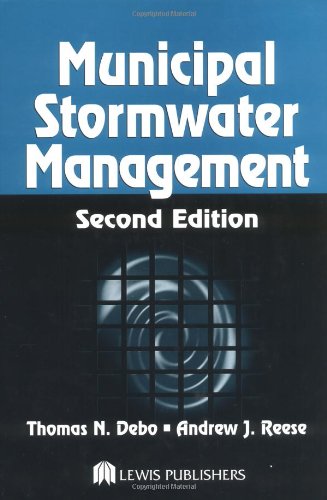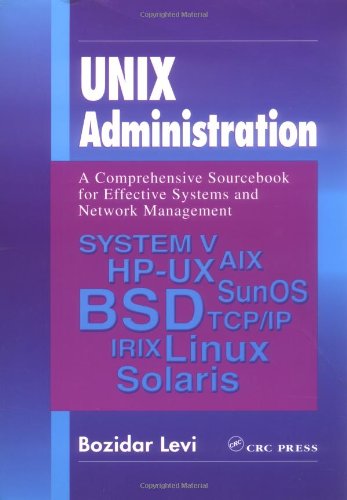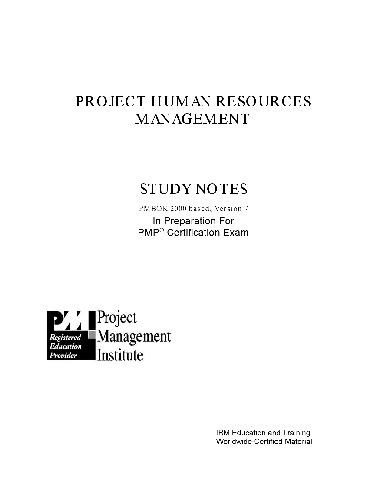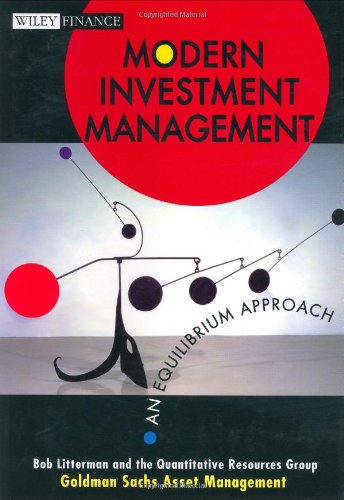Thomas N. Debo, Andrew Reese1566705843, 9781566705844, 9781420032260
Table of contents :
Municipal Stormwater Management Second Edition……Page 2
Preface……Page 4
Authors……Page 5
Contents……Page 6
Paradigm #1 – Run It In Ditches……Page 28
Paradigm #3 – Run It In Stormwater Pipes……Page 29
Paradigm #4 – Keep It From Stormwater Pipes……Page 30
Paradigm #5 – Well, Just Do Not Cause Flooding……Page 31
The New Breed of Stormwater Paradigms……Page 32
Paradigm #7 – It Is The Ecology……Page 33
Paradigm #8 – Water Is Water Is Watershed……Page 34
From Paradigm To Paradigm……Page 36
1.2 Understanding Stormwater Management Problems and Solutions……Page 38
1.3 The Organization of the Rest of the Book……Page 42
References……Page 43
2.1 The Stormwater Management Program……Page 45
Long-Range Aspects……Page 46
Day-to-Day Stormwater Management……Page 47
2.3 Overview of the Legal Aspects of Stormwater Management……Page 48
Technical Manuals……Page 49
Computer Models……Page 50
Databases and Infrastructure Inventories……Page 51
GIS Systems……Page 57
Query and Analysis……Page 58
Data Display, Output, and Visualization……Page 59
Remote Sensing……Page 62
Light Detection and Ranging (LIDAR)……Page 63
2.5 Overview of the Organizational Aspects of Stormwater Management……Page 64
2.6 Overview of the Financial Aspects of Stormwater Management……Page 66
Long-Term Problem Areas……Page 68
Legal/Financial/Organizational/Technical Underpinning Problem Areas……Page 69
Charlotte, North Carolina……Page 70
Louisville MSD, Kentucky……Page 73
Tulsa, Oklahoma……Page 75
Basin-Wide Planning and Control……Page 78
Comprehensive Maintenance……Page 79
2.10 The Stormwater Program Feasibility Study……Page 80
2.11 Floodplain Management……Page 81
Flood Insurance Programs……Page 83
Reference……Page 85
3.2 Defining the “Public”……Page 86
8. Estimate costs and level of effort required for each phase of the program…….Page 88
3.4 Public Involvement and Education Techniques……Page 90
Public Participatory Groups……Page 91
3.5 The Stormwater Advisory Committee……Page 93
Defining the Group……Page 94
Media and the General Public……Page 95
Defining the Issues……Page 96
Informed Consent and Consensus Building……Page 97
Policy Papers……Page 98
3.6 Volunteer Programs……Page 100
3.7 Dealing with the Media……Page 101
3.8 Risk Communications……Page 103
3.9 Technical Communications……Page 106
References……Page 107
4.1 Introduction……Page 108
Riparian Doctrine……Page 109
Common Enemy Doctrine……Page 110
Municipal Liability……Page 111
“Takings”……Page 112
Legal Authority and Context……Page 113
Special Water-Quality Considerations……Page 114
Detention……Page 115
Identify Problems and Issues……Page 116
Formulation of Objectives……Page 117
Developing Policies……Page 119
Detention Analysis Example……Page 120
Drafting the Ordinance……Page 122
Stormwater Management Design Manual……Page 124
Rigid Ordinance Provision……Page 125
4.6 When to Adopt an Ordinance……Page 127
Municipal Role in Encouraging Innovative Solutions……Page 129
Field Inspection……Page 130
Enforcement……Page 131
4.8 Documentation……Page 132
Purpose of Documentation……Page 133
Design……Page 134
Documenting the Plan Development Process……Page 135
Documentation Procedures……Page 136
Hydrology……Page 137
Culverts……Page 138
Storage Facilities and BMPs……Page 139
4.9 Documentation for Legal Proceedings……Page 140
References……Page 142
5.1 Financing Needs of Stormwater Management Programs……Page 143
5.2 Major Stormwater Funding Methods……Page 144
Advantages of the Utility Concept……Page 145
Uniqueness Factor……Page 148
5.4 Utility Funding Methods……Page 149
General Policy Information……Page 153
Stormwater Credits……Page 155
Overview……Page 156
The Program Track……Page 157
The Public Track……Page 158
The Data Track……Page 162
Feasibility Studies……Page 163
Purpose……Page 164
Deliverables……Page 165
Task 4 – Projected Stormwater Program……Page 166
Task 6 – Service Charge Billing, Collection, and Accounting Options……Page 167
Task 8 – Action Plan Report……Page 168
References……Page 169
Purpose of Questionnaire……Page 172
Please Provide Your Answers on A Separate Sheet Keyed to Question Numbers Here……Page 173
Data Collection Effort……Page 177
6.2 Sources and Types of Data……Page 178
Contributing Size……Page 179
Slopes……Page 181
Watershed Land Use……Page 182
Stream Profile……Page 183
Debris and Ice……Page 184
Remote Data Acquisition……Page 185
Geographical Information Systems……Page 186
Telemetry……Page 187
Field Reviews……Page 188
Data Accuracy……Page 189
Sensitivity Studies……Page 190
Time Series Analysis……Page 191
Other Statistical Methods……Page 192
Overview……Page 193
Factors Influencing Data Collection……Page 194
Precipitation Data Acquisition……Page 195
Radar Precipitation Data Acquisition……Page 196
Rain Gauging Networks……Page 197
Rainfall Average Depth Estimation……Page 198
Basic Equipment and Techniques Overview……Page 200
Selection of Gauging-Station Sites……Page 204
Velocity Measurements……Page 205
Velocity Meters……Page 207
6.10 Environmental Data Considerations and Collection……Page 208
Environmental Sampling Objectives……Page 209
Key Constituents……Page 211
Nutrients……Page 212
Human Pathogens……Page 213
Sediment……Page 214
Atmospheric Fallout……Page 215
Other Human Activities……Page 216
Impacts on Receiving Waters……Page 217
Land-Use Baseline Data……Page 218
Urban Runoff Quality Data Collection……Page 220
Sample Types……Page 222
References……Page 223
Principle Site Data Sources……Page 227
Principle Environmental Data Sources……Page 228
Other Data Sources……Page 229
Appendix B – Field Investigation Form and Checklist……Page 230
7.1 Introduction……Page 233
7.2 Concept Definitions……Page 234
Drainage Basin Characteristics……Page 235
Meteorological Characteristics……Page 236
Risk……Page 237
Risk-Based Analysis……Page 238
Design Frequency……Page 239
Cross Drainage……Page 240
Detention and Retention Storage Facilities……Page 241
7.5 Hydrologic Procedure Selection……Page 242
Analysis of Stream Gauge Data……Page 243
Regression Equations……Page 244
Synder’s Unit Hydrograph……Page 245
Summary……Page 246
7.6 Calibration……Page 247
7.7 Precipitation and Losses……Page 248
Intensity-Duration-Frequency Curves……Page 249
Duration……Page 250
The “Balanced-Storm Approach”……Page 251
SCS 24-Hour Storm……Page 252
Huff Distributions……Page 253
Yen and Chow’s Method……Page 256
Rational Formula……Page 258
Characteristics and Limits of the Rational Method……Page 259
Time of Concentration……Page 261
Drainage Area……Page 263
Runoff Coefficient……Page 264
Example Problem – Rational Method……Page 267
7.9 SCS Hydrologic Methods……Page 268
Rainfall-Runoff Equation……Page 269
Curve Number……Page 271
Unconnected Impervious Areas……Page 273
Calculation of Lag Time and Time of Concentration……Page 275
Travel Time and Time of Concentration Empirical Equation……Page 280
Travel Time and Time of Concentration – Manning’s Equation……Page 282
SCS Peak Discharges……Page 285
Limitations……Page 286
SCS Peak Discharge Example……Page 289
Rainfall Excess Using SCS Methods……Page 291
Rainfall Excess Example……Page 292
SCS Dimensionless Unit Hydrographs……Page 294
Dimensionless Unit Hydrograph Discussion……Page 296
Unit Hydrograph Example……Page 299
7.10 Santa Barbara Urban Hydrograph Method……Page 301
Output Table – 24-hour Storm (Table 7-31)……Page 302
Output Table – 24-Hour Storm……Page 304
Water-Quality Volume Peak Flow Calculation……Page 306
Basic Approach……Page 308
Runoff (Ro)……Page 312
Infiltration (I)……Page 313
Evaporation (E)……Page 314
Evapotranspiration (Et)……Page 315
Overflow (Of)……Page 316
7.14 Downstream Hydrologic Assessment……Page 317
Increased Volume……Page 318
The Ten-Percent Rule……Page 319
References……Page 321
8.2 Concept Definitions……Page 324
Design Steps……Page 325
Design Factors……Page 326
Longitudinal Slope……Page 327
Roadside and Median Channels……Page 328
Shoulder Gutters……Page 329
Costs……Page 330
8.4 Stormwater Inlet Overview……Page 331
8.5 Design Frequency and Spread……Page 332
Uniform Cross Section……Page 333
Composite Gutter Sections……Page 335
8.7 Grate Inlet Design……Page 339
Grate Inlets on Grade……Page 340
Grate Inlet in Sag……Page 343
Curb Inlets on Grade……Page 345
Curb Inlets in Sump……Page 349
8.9 Combination Inlets……Page 352
Entrance Losses……Page 353
Junction Losses – Several Entering Flows……Page 354
8.11 Storm Drains……Page 355
Formulas for Gravity and Pressure Flow……Page 358
Hydraulic Grade Line……Page 362
Hydraulic Grade Line Design Procedure……Page 363
Roadway Pollution……Page 366
Structural Roadway BMP Design Overview……Page 369
References……Page 370
Appendix A – Metric Design Figures……Page 372
9.1 Introduction……Page 386
9.2 Concept Definitions……Page 387
Determine and Analyze Site Characteristics……Page 388
Design Side- and Slope-Tapered Inlets (Optional)……Page 389
Engineering and Technical Design Criteria……Page 390
Velocity Limitations……Page 391
Headwater Limitations……Page 392
Tailwater Conditions……Page 393
Improved Inlets……Page 394
Commercial End Sections……Page 395
Material Selection……Page 396
Culvert Sizes and Shapes……Page 397
Weep Holes……Page 399
Safety Considerations……Page 400
Critical Depth – Outlet Control……Page 401
Tailwater Depth > Barrel Depth – Outlet Control……Page 402
9.5 Design Procedures……Page 403
Use of Inlet- and Outlet-Control Nomographs……Page 404
Input Data……Page 409
9.7 Long-Span Culvert……Page 411
9.8 Design of Improved Inlets……Page 412
Bevel-Edged Inlet……Page 413
Improved Inlet Performance……Page 414
Design Figure Limits……Page 415
9.10 Flood Routing and Culvert Design……Page 416
Design Procedure……Page 417
References……Page 418
Appendix A……Page 420
Appendix B……Page 480
Channel Types……Page 539
Rigid Linings……Page 540
General Design Criteria……Page 541
10.3 Hydraulic Terms and Equations……Page 542
Kinetic Energy Coefficient……Page 543
Critical Flow……Page 544
Manning’s Equation……Page 545
10.4 ManningÌs n Values……Page 546
10.5 Manning’s n Handbook……Page 548
10.6 Best Hydraulic Section……Page 551
10.7 Uniform Flow Calculations……Page 552
General Solution Nomograph……Page 553
Trial- and- Error Solution……Page 556
Average Roughness……Page 557
10.8 Critical- Flow Calculations……Page 558
Design Stability……Page 560
Erosion Control……Page 563
100- Year Flood Elevation……Page 564
10.11Uniform Flow Û Example Problems……Page 565
Grassed Channel Design Stability ( Example 2)……Page 566
Grassed Channel Design Capacity ( Example 3)……Page 567
10.12 Gradually Varied Flow……Page 568
Direct Step Method……Page 569
Standard Step Method……Page 570
Direct Step Method……Page 572
Standard Step Method……Page 574
10.14 Hydraulic Jump……Page 576
Riprap Design……Page 578
Gabions and Rock Mattresses……Page 582
Soil Cement……Page 585
Bioengineering……Page 587
Overview……Page 588
Channel Response to Change……Page 589
Proportionality Approaches……Page 590
Assessing Stream Stability……Page 591
Stable Channel Design Approaches……Page 592
Maximum Permissible Velocity Method……Page 593
Tractive Stress Method……Page 596
Regime Equations for Channel Proportions……Page 598
Gravel Bed Equations……Page 599
Neill Method……Page 600
Tractive Stress Design Example……Page 605
Grade Control Structures……Page 607
Drop Structures, Chutes, and Flumes……Page 608
Instream Mitigation Features……Page 609
Riprap and the Environment……Page 614
Greenway Planning……Page 616
Preserve and Protect Aquatic Resources……Page 618
Use a Reference Site……Page 619
Restoration Practices……Page 620
Stream Health Assessment……Page 622
References……Page 623
11.2 Uses and Types of Storage Facilities……Page 628
Uses of Storage Facilities……Page 629
Types of Storage Facilities……Page 630
11.3 Design Criteria……Page 632
General Design Criteria……Page 633
Location Design Criteria……Page 634
11.4 Safe Dams Act……Page 635
11.5 General Design Procedure for Storage Routing……Page 636
Stage-Storage Curve……Page 637
General Procedure……Page 638
11.6 Outlet Hydraulics……Page 639
Perforated Risers……Page 640
Two-Way Drop Inlets……Page 642
Submerged Weir Correction……Page 645
Sharp-Crested Rectangular Weirs……Page 646
V-Notch Weirs……Page 649
Broad-Crested Weirs……Page 650
Ogee Shapes……Page 651
Special Weirs……Page 652
Side-Channel Weirs……Page 653
Example of Side-Channel Weir……Page 656
Orifice Meters and Nozzles……Page 657
Drop Inlet Boxes……Page 662
Rooftop Detention……Page 664
Modified Rational – Mass Balance Method……Page 665
Drywells for Roof Drains……Page 666
Porous Pavement……Page 667
Combination Outlets……Page 668
Multistage Outlet Design Procedure……Page 669
Method 1: Maximum Hydraulic Head with Routing……Page 672
Method 2: Average Hydraulic Head and Average Discharge……Page 673
Extended-Detention Outlet Protection……Page 674
Alternative Method……Page 676
Peak Flow Reduction……Page 677
11.9 Routing Calculations……Page 678
11.10 Example Problem……Page 679
Preliminary Volume Calculations……Page 680
Design and Routing Calculations……Page 681
Downstream Effects……Page 682
Overview……Page 683
Stage-Storage……Page 684
Chainsaw Routing……Page 685
Numerical Instability……Page 686
11.12 Modified Rational Method Detention Design……Page 687
Example Problem……Page 690
11.13 Hand-Routing Method for Small Ponds……Page 691
Basic Approach Overview……Page 692
Emergency Spillway Approximation……Page 693
Design Example – Sizing of a Small Pond for Orifice Flow……Page 695
Step 2 – Basic Calculations……Page 696
Step 6 (Optional) – Recalculate Routing Number……Page 697
11.14 Land-Locked Retention……Page 698
11.16 Retention Facility Example Problem……Page 701
11.17 Construction and Maintenance Considerations……Page 702
Trash Racks and Safety Grates……Page 703
References……Page 706
12.2 Recommended Energy Dissipators……Page 709
Dissipator Type Selection……Page 710
Flood Frequency……Page 711
Culvert Outlet Type……Page 712
Data Needs……Page 713
Procedure Outline……Page 714
12.5 Local Scourhole Estimation……Page 715
12.6 Riprap Aprons……Page 717
Design Procedure……Page 718
Design Considerations……Page 720
Example 2 – Riprap Apron Design for Maximum Tailwater Conditions……Page 721
12.7 Riprap Basin Design……Page 722
Design Procedure……Page 723
Design Considerations……Page 725
Example 1……Page 726
Example 2……Page 727
Example 3……Page 728
12.8 Baffled Outlets……Page 729
Design Procedure……Page 730
Example Problem……Page 731
12.9 Downstream Channel Transitions……Page 733
12.10 Energy Dissipator Computer Model……Page 735
References……Page 736
13.1 Introduction……Page 738
Surface Water Drivers for BMP Usage……Page 739
Urban Hot Spots……Page 740
Pollution Availability and Fate……Page 741
Stressors Associated with Urban Runoff……Page 743
Overall Approach: Structural and Nonstructural BMPs……Page 744
BMPs and Disease Vectors……Page 746
Event Mean Concentrations……Page 747
Nationwide Regression Equations Method……Page 749
Example Application (Tasker and Driver, 1988)……Page 751
The Simple Method……Page 754
Acute or “Shock” Pollutant Loading Estimates……Page 755
Basis for Design Criteria for Structural BMPs……Page 756
Unified Sizing Criteria……Page 760
Stormwater Credits for Better Site Design……Page 761
Basic Structural BMP Types……Page 762
Introduction……Page 763
General BMP Pollutant Removal Effectiveness……Page 767
Structural BMP Screening……Page 770
Step 1: Overall Applicability……Page 771
Step 2: Specific Criteria……Page 774
Step 3: Location and Permitting Considerations……Page 776
Dry detention basins Û While a municipality may consider dry detention basins effective for stormwater quantity management, a detention time of even a few hours is insufficient to permit settling of the smaller fractions of the suspended materials asso……Page 768
Flow Regulators……Page 780
Advantages and Disadvantages of Regional Stormwater Controls……Page 782
Disadvantages of Regional Stormwater Controls……Page 783
Combined Measures……Page 784
Stormwater Treatment Trains……Page 785
Calculation of Pollutant Removal for Structural Controls in Series……Page 788
13.10 Routing with WQv Removed……Page 789
Overview……Page 790
Overall Design Approach……Page 791
Extended Dry Detention Basin……Page 793
Pond Sizing……Page 795
Outlets……Page 796
Pollutant Removal Information……Page 798
General Design Criteria……Page 799
Typical Recommended Specifications……Page 800
Sizing Example……Page 801
Retention Pond……Page 802
Pond Sizing……Page 811
Typical Required Specifications……Page 813
Typical Maintenance Standards for Extended Detention and Wet Ponds……Page 815
Alum Treatment System……Page 816
Design Example……Page 817
Constructed Stormwater Wetlands……Page 822
Stormwater Wetlands……Page 825
Wetland Design……Page 833
Permitting……Page 835
Typical Required Specifications……Page 836
Typical Recommended Specifications……Page 838
Operation and Maintenance Requirements……Page 839
Pollution Removal Efficiency……Page 840
Design……Page 841
Typical Required Specifications……Page 842
Typical Recommended Specifications……Page 845
Design Example……Page 846
Overview……Page 850
Configurations……Page 851
Maintenance……Page 853
Austin First- Flush Filtration Basin……Page 854
Design……Page 856
Surface Sand Filter……Page 860
Design Information……Page 861
Design Example……Page 869
Linear (Perimeter) Sand Filter……Page 875
Underground Sand Filter……Page 877
Organic Sand Filters……Page 881
Infiltration Trenches……Page 884
Infiltration Trench Design……Page 886
Typical Required Specifications……Page 889
Typical Recommended Specifications……Page 891
Design Example……Page 892
Porous Pavement……Page 893
Pollutant Removal Efficiency……Page 896
Porous Pavement Design……Page 897
Operation and Maintenance Requirements……Page 899
Typical Required Specifications……Page 901
Design Example……Page 903
Modular Paving Blocks……Page 904
Typical Design Specifications for Modular Blocks……Page 908
Grassed Swales……Page 909
Pollutant-Removal Efficiency……Page 912
Dry Swale Design……Page 914
Typical Required Specifications: Dry and Wet Swales……Page 917
Filter Strips And Flow Spreaders……Page 919
Pollutant-Removal Efficiency……Page 921
Design of Filter Strips……Page 922
Filter Strips for Pretreatment……Page 925
Typical Required Specifications……Page 926
Typical Operation and Maintenance Requirements……Page 927
Design Example……Page 928
Oil/Grit Separators (Water-Quality Inlet, Gravity Separator)……Page 929
Pollution-Removal Efficiency……Page 931
Oil/Water Separator Design……Page 932
Typical Required Specifications……Page 936
Recommended Specifications……Page 937
Alum Treatment……Page 938
Design Criteria……Page 940
Local Acceptance……Page 942
Multichambered Treatment Train……Page 953
References……Page 955
Introduction……Page 965
Keys to Successful Master Planning……Page 966
14.2 The Master Planning Process: The Scoping Study……Page 967
Step 1 – Make a Needs Analysis……Page 968
Step 2 – Determine Constraints to Possible Solutions……Page 970
The End Product of the Scoping Study……Page 971
14.3 Computer Model Choice for Master Planning……Page 972
14.4 Five Basic Types of Master Plans: The Flood Study……Page 973
Major Creek Flooding……Page 977
Preliminary Field Investigation……Page 979
Design Storm Development……Page 980
Hydrologic Model Development……Page 982
Hydraulic Model Development……Page 986
System Alternatives Development and Analysis……Page 989
Minor System Flooding……Page 990
14.5 Five Basic Types of Master Plans: The Cost/Benefit Analysis Master Plan……Page 991
14.6 Five Basic Types of Master Plans: Stormwater Quality Master Plan……Page 997
14.7 Five Basic Types of Master Plans: The Ecological Study Master Plan……Page 1001
Introduction……Page 1002
Basic Approach……Page 1004
Task 2: Identify Possible Stakeholders……Page 1005
Step 2 – Set Up a Watershed Management Structure……Page 1006
Task 1: Interpret Goals at the River Basin Level that May Impact the Watershed……Page 1007
Task 2: Conduct Watershed-Wide Analyses and Surveys, if Needed……Page 1008
Task 3: Prepare Subwatershed and Aquatic Corridor Management Maps……Page 1009
Step 8 – Revisit and Update the Plan……Page 1010
References……Page 1011
The Stormwater Quality Approach – History……Page 1014
Broad Pollution Categories……Page 1016
Changes to Stream Flow……Page 1017
Changes to Stream Geometry……Page 1018
Degradation of Aquatic Habitat……Page 1019
Constant EMC……Page 1020
Hot Spots……Page 1021
First Flush and Treatment Volume……Page 1023
Treatment Train Concept……Page 1024
Water-Quality Standards……Page 1027
Phase I Basic Requirements……Page 1029
Phase II Basic Requirements……Page 1030
Maximum Extent Practicable……Page 1032
Measurable Goals……Page 1034
General Permit Conditions……Page 1036
The Six Minimum Controls……Page 1037
Reaching Diverse Audiences……Page 1038
Guidelines for Developing and Implementing this Measure……Page 1039
Implementation Challenges……Page 1040
Guidelines for Developing and Implementing this Measure……Page 1041
Legal Prohibition and Enforcement……Page 1042
The Plan……Page 1043
Educational Outreach……Page 1044
Regulatory Mechanism……Page 1046
Information Submitted by the Public……Page 1047
Nonstructural BMPs……Page 1049
Structural BMPs……Page 1050
15.5 Costs of NPDES Phase II……Page 1051
#1 – Think Paradigm Shift……Page 1055
#3 – Bring Me in Early, I’m Your Partner; Bring Me in Late, I’m Your Judge……Page 1056
#4 – Do not Build New Problems……Page 1058
#5 – Get the Foundations Right……Page 1059
#7 – Ride the Treatment Train……Page 1060
#8 – Get a Tool Set……Page 1061
#9 – Not All that Glitters is Gold……Page 1062
#10 – Check the Pool……Page 1064
The Nine-Step Planning Approach……Page 1065
Step 1……Page 1066
Step 2……Page 1069
Step 6……Page 1073
Evaluation of Best Management Practices……Page 1074
Step 9……Page 1077
Self-Analysis……Page 1078
Action Plan……Page 1080
References……Page 1081
16.2 Site Design Concepts – Overview……Page 1085
Conservation of Natural Features and Resources……Page 1086
Site-Planning Goals……Page 1087
Watershed Basis……Page 1090
16.3 Site Design Concepts – Implementation……Page 1091
16.4 Site Design Concepts – Design Steps……Page 1093
Overview……Page 1095
Site Characteristics……Page 1098
Planning and Regulatory Controls……Page 1099
Site Analysis……Page 1100
Overview……Page 1101
Views and Visual Characteristics……Page 1104
Other Regulatory Requirements……Page 1105
Overview……Page 1106
Development of the Stormwater Concept……Page 1107
Preliminary Plan……Page 1109
Calculation of Final Stormwater Control Volumes……Page 1110
Construction……Page 1111
Preconstruction Meeting……Page 1113
Maintenance Inspections……Page 1114
16.5 Stormwater Aspects of Site Construction……Page 1115
Construction Costs……Page 1116
Construction Plans……Page 1117
Hydrology Considerations……Page 1119
Erosion- and Sediment-Control Considerations……Page 1120
Culvert Considerations……Page 1121
Bridge Considerations……Page 1122
Storm Drain Considerations……Page 1124
Selection Factors……Page 1125
As-Built Plans……Page 1126
References……Page 1127
17.1 Introduction……Page 1129
Inspection……Page 1130
Goals……Page 1131
Objectives……Page 1132
Policy Resolution……Page 1133
Level of Service……Page 1134
Conditions Standards and Performance Standards……Page 1135
Maintenance Approaches……Page 1136
Organizing the Drainage System……Page 1139
Infrastructure and Asset Management……Page 1140
Privatization of Services……Page 1141
17.4 Detention Facilities……Page 1142
Maintenance Tasks……Page 1143
Storage Volume Control……Page 1144
17.6 Culverts……Page 1146
17.7 Bridges……Page 1147
17.8 Ditches……Page 1149
17.9 Stormwater Inlets……Page 1150
17.11 Wash Checks and Energy Dissipators……Page 1151
17.14 Pavement Edge Drains……Page 1152
References……Page 1153







Reviews
There are no reviews yet.